#kyoto university
Text
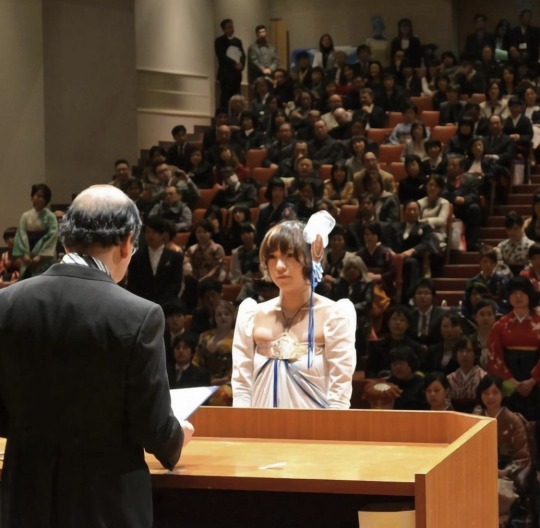


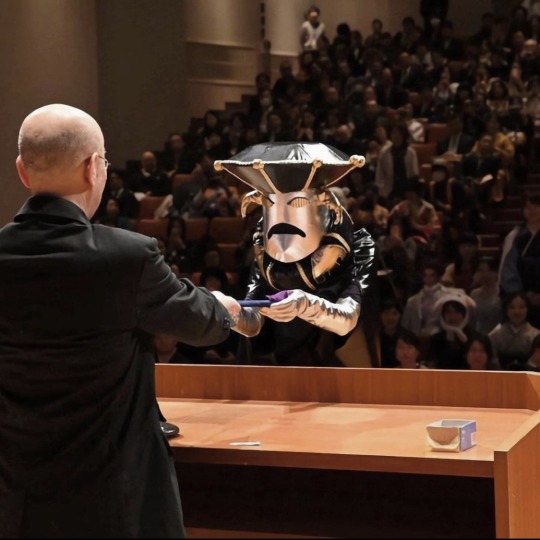


Kyoto University is the second oldest Japanese university and one of the top-ranked in all of Asia. It's widely considered one of the most prestigious and serious places to study in Japan. Kyoto itself is known for its traditional aesthetic, but Kyoto University students have an unorthodox tradition: cosplaying at their graduation.
266 notes
·
View notes
Text



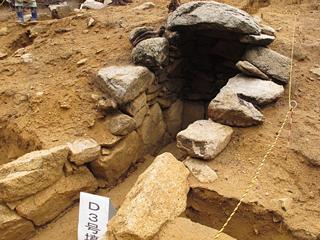

Sean bienvenidos, japonsistasarqueológicos, a una nueva entrega arqueológica, en esta ocasión os voy a hablar del túmulo Shofuku-ji una vez dicho esto, pónganse cómodos que empezamos.
-
¿Dónde se localiza el túmulo Shofuku-ji? Se localiza en la ciudad de Kawanishi, en la prefectura de Hyōgo, localizado a su vez en la región de Kansai. La cámara funeraria se descubrió en la era Meiji. En 1934, el Dr. Sueharu Umehara de la Universidad de Kyoto realizó un estudio de campo y en la década de 1970, se realizó un estudio llevado a cabo por la Junta de Educación de la ciudad de Kawanishi que descubrió un ataúd de madera en la que se enterraron: puntas de flecha de hierro, espadas de hierro.
-
Data del siglo V y el siglo V y corresponde al periodo Kofun, con una longitud total de 40 m y fue construido a principios del siglo VI. Se descubrió un haniwa, que fue desenterrado durante la excavación, y se hizo de una manera muy similar al haniwa en la región de Owari que corresponde a la actual prefectura occidental de Aichi.
-
Espero que os haya gustado y nos vemos en próximas publicaciones, que pasen una buena semana.
日本の考古学者の皆さん、ようこそ!今回は、正福寺古墳についてお話します!では、早速始めましょう。
-
正福寺塚はどこにあるのですか?関西地方に位置する兵庫県川西市にあります。古墳が発見されたのは、明治時代です。1934年に京都大学の梅原末治博士が現地調査を行い、1970年代には川西市教育委員会の調査で木棺が発見され、その中に鉄鏃、鉄剣、鉄刀が埋められていました。
-
5~5世紀の古墳時代に相当し、全長40m、6世紀初頭に造られたものである。発掘調査で出土した埴輪は、現在の愛知県西部の尾張地方にある埴輪と酷似した作りのものが発見されています。
Welcome, Japanese archaeologists, to a new archaeological instalment, this time I am going to talk to you about the Shofuku-ji tumulus, having said that, make yourselves comfortable and let's get started.
-
Where is the Shofuku-ji mound located? It is located in the city of Kawanishi, Hyōgo Prefecture, located in the Kansai region. The burial chamber was discovered in the Meiji era. In 1934, Dr. Sueharu Umehara of Kyoto University conducted a field survey and in the 1970s, a survey conducted by the Kawanishi City Board of Education uncovered a wooden coffin in which were buried: iron arrowheads, iron swords, and iron swords.
-
It dates from the 5th-5th century and corresponds to the Kofun period, with a total length of 40 m and was built in the early 6th century. A haniwa, which was unearthed during excavation, was discovered and made in a very similar manner to the haniwa in the Owari region of what is now western Aichi Prefecture.
-
I hope you liked it and see you in future posts, have a nice week.
#日本#歴史#考古学#古墳#プレヒトリア#正福寺#兵庫県#川西市#明治時代#京都大学#愛知県#ユネスコ#考古遺跡#Japan#History#Archaeology#Kofun#Prehitorea#Shofukuji#Hyogo#Kawanishi#Meiji#Kyoto University#Aichi#UNESCO#Archaeological sites
9 notes
·
View notes
Photo

Flat fullerene fragments attractive to electrons, shows study
Researchers at Kyoto University in Japan have gained new insights into the unique chemical properties of spherical molecules composed entirely of carbon atoms, called fullerenes. They did it by making flat fragments of the molecules, which surprisingly retained and even enhanced some key chemical properties. The team published their findings in the journal Nature Communications.
"Our work could lead to new opportunities in a wide range of applications, such as semiconductors, photoelectric conversion devices, batteries, and catalysts," says group leader Aiko Fukazawa at the Institute for Integrated Cell-Material Sciences (iCeMS).
Buckminsterfullerene (or simply 'buckyball') is a molecule in which 60 carbon atoms are bonded to form a spherical shape. It was named after structural similarities to the geodesic domes designed by the celebrated architect Buckminster Fuller, and its unique structure has continuously attracted the interest of scientists. The buckminsterfullerene and related spherical carbon clusters with different numbers of carbon atoms are colloquially known as fullerenes, after Fuller's surname.
Read more.
#Materials Science#Science#Fullerene#Carbon#Buckminsterfullerene#Buckyballs#Buckminster Fuller#Electrons#Kyoto University
16 notes
·
View notes
Text

4 notes
·
View notes
Text
Brandon Vigliarolo:
Japanese scientists are putting a new spin on human life in outer space with a proposal for centrifugal skyscrapers on the Moon and Mars.
Kyoto University academics and folks at Kajima Construction, one of the largest building firms in Japan, have partnered on the concept, which they call "Luna Glass" and "Mars Glass."
3 notes
·
View notes
Text
1 note
·
View note
Text

My no. 1 historical anti-favourite's graduation photo from Kyoto Imperial University, top of his class in the Faculty of Medicine.
Ishii Shiro wouldn't have known then that his speciality was going to be biological weapons - he graduated in 1920, and by all accounts he came up with the idea for a Japanese bioweapons program after reading about their prohibition in the Geneva Protocols of 1945. Sometimes I want to give this as a kind of really twisted "inspirational" story to anyone who graduates feeling like they still have no idea what they will do with their life.
When feeling despondent about the state of the world and the personality characteristics that are suited for success in our society, I've been known to pull up this photo on my phone and stare it down for a while. What was he thinking at the time, I wonder. How did he feel? Many of his classmates already noticed he was a nasty piece of work (sources say that he alienated most of them pretty quickly with his arrogant attitude), did he notice or care or even bother to give the matter thought? Did he ever worry that he might not make a success of himself, or did his array of possibly psychopathic personality traits extend to an unshakeable sense of self belief? (How the hell would it even feel to be graduating university with an unshakeable sense of self-belief?? I envy high functioning psychopaths a little sometimes, I'm not going to lie).
Not the most informative post on this occasion, but here he is! Look into his inscrutable expression and be annoyed/ mildly disturbed yourself.
#history#japan#japanese history#pacific war#unit 731#war crimes#world war 2#dark academia#kyoto university#psychopath#tc community
0 notes
Text
#wooden satellite#traditional Japanese carpentry techniques#Kyoto University#Kuroda Kobo#Otsu#cultural assets#national treasures#precision#Japanese big-leaf magnolia#metal particles#environmental impact#small satellites#communication#wood structure#cosmic rays#International Space Station#durability#extreme temperature changes#joinery technique#tomegata kakushi arigumi#payload capacity#NASA#JAXA#final safety check#space development#tokyo#innovation#japan
0 notes
Text
0 notes
Text
New Audio: JOVM Mainstays Otoboke Beaver Shares a New Ripper
New Audio: JOVM Mainstays Otoboke Beaver Shares a New Ripper @otobokebeaver @damnably @girlieaction @rosieboyd @delkin03
Kyoto, Japan-based garage punk outfit and JOVM MAINSTAYS Otoboke Beaver(おとぼけビ~バ~ in Japanese) — Accorinrin (vocals, guitar), Yoyoyoshie (guitar, vocals), Hirochan (bass, vocals) and Kahokiss (drums, vocals) — can trace their origins back to when the band’s members met at Kyoto University‘s music club.
Otoboke Beaver quickly built a profile both locally and nationally for their unique pairing…

View On WordPress
#Chu Chu Song#Damnably Records#garage punk#Kyoto Japan#Kyoto University#LM Studio#Music Hall of Williamsburg#New Audio#New Single#Osaka Japan#Otoboke Beaver#Otoboke Beaver Anata Watashi Daita Ato Yome No Meshi#Otoboke Beaver Don&039;t light my fire#Otoboke Beaver I Am Not Maternal#Otoboke Beaver ITEKOMA HITS#Otoboke Beaver Okoshiyasu!! Otoboke Beaver#Otoboke Beaver PARDON?#Otoboke Beaver Super Champon#punk rock#Single Review#Single Review: Chu Chu Song#Single Review: Otoboke Beaver Chu Chu Song#women who kick ass
0 notes
Text
Thursday, August 10.
Graduation day at The University of Kyoto.
It's summer!
The season of sunshine, at least a little relaxation, maybe a holiday, and, for many, the season of graduation. The end of an era, if you will. The changing of the guard, one might say. The passing of the baton, if you must. It is the departure from school, college, high school, middle school, university—and into the beyond, into the great unknown. For where one door must close, another door must open.
This change is an all manner of things at once: exciting, frightening, a clear way forward, and a leap into the dark. However, what is without doubt is it makes for a great chance to dress to the nines—and then some. For most, this means suits, dresses, gowns, and a mortarboard. For those at The University of Kyoto, Japan, #graduation looks a little different. And quite frankly we ~cannot~ get enough.
#today on tumblr#graduation#graduates#gradblr#im graduating#graduación#graduaciones#the university of kyoto#kyoto#japan#love that#dress up#fashion#dress#to#the#nines#costumes
285 notes
·
View notes
Photo
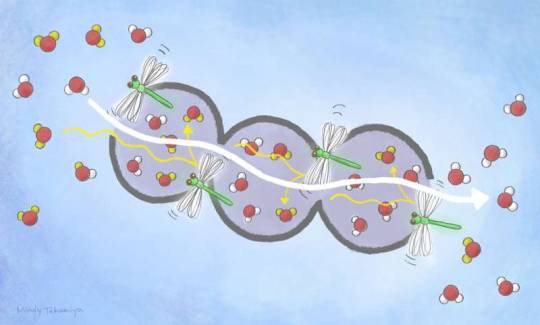
New material separates water from heavy water
A research group led by Susumu Kitagawa of Kyoto University's Institute for Cell-Material Sciences (iCeMS), Japan and Cheng Gu of South China University of Technology, China have made a material that can effectively separate heavy water from normal water at room temperature.
Until now, this process has been very difficult and energy intensive. The findings have implications for industrial—and even biological—processes that involve using different forms of the same molecule. The scientists reported their results in the journal Nature.
Isotopologues are molecules that have the same chemical formula and whose atoms bond in similar arrangements, but at least one of their atoms has a different number of neutrons than the parent molecule. For example, a water molecule (H2O) is formed of one oxygen and two hydrogen atoms.
The nucleus of each of the hydrogen atoms contains one proton and no neutrons. In heavy water (D2O), on the other hand, the deuterium (D) atoms are hydrogen isotopes with nuclei containing one proton and one neutron. Heavy water has applications in nuclear reactors, medical imaging and in biological investigations.
Read more.
#Materials Science#Science#Heavy water#Water#Molecules#Porosity#Porous coordination polymers#Polymers#Copper#Kyoto University
22 notes
·
View notes
Text
La universidad de Kyoto (Japón) permite a los estudiantes vestirse de lo que quieran en la ceremonia de graduación:
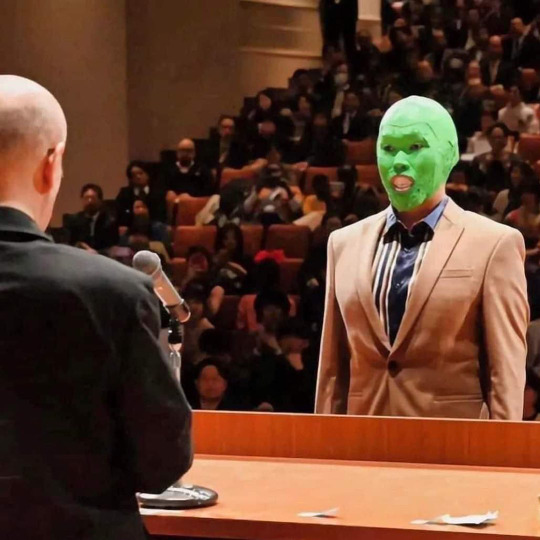
Aquí algunos de los mejores 😂





#japon#japan#kyoto#universidad#university#college#disfraz#lmao#graduacion#graduation#graduate student
220 notes
·
View notes
Text
Heya seniors! Are you ready to take those tubular steps across the #NUGrad2024 stage? I sure hope so; because I’ve got a cos-playful Clive Update for you all…
This year, we’re bringing back an old school tradition! (Ask your gramps about it.) Since you all so kindly wear those uniforms day after day… when YOU walk the stage, YOU pick your outfit!
It could be anything under the great Solgaleo: giant inflatable Tyrantrum. Old T-shirt and shorts that say “I Hate Naranja-Uva” (say it isn’t so!). That cool Kitakami Jinbei you got abroad. Incredibly accurate Clive cosplay. (Please? 🥺) Or just a regular cap and gown. We have those. For free. As long as you have enough clothing to meet public decency standards and nothing particularly profane or offensive on, though, strut your stuff! And then, enjoy the rest of your life wearing whatever the heck you want.
#pkmn irl#pokeblogging#clivespiration#clive update#//citing my sources here: this is based on kyoto university’s graduation!
27 notes
·
View notes
Text
Mountain Apparition "Astonishing Kumomagusa"

art by juwen971
This is Sannyo's first Spellcard. It is based on the Kumomagusa flower, native to the mountains of Japan (Saxifraga Merkii, Fisch.)


Curiously, not all Kumomagusa have 6 overlapping pedals like Sannyo's, though some do. A spread out, 5 pedal variety is more common, though they are the same species, think of it as a 4 leaf clover vs 3 leaf, but not that rare. The overlapping 6 petal variety that Sannyo's Spellcard is modeled after is the mutated variety. (She does tend to go for the rare flowers, after all)
On the topic of variety, Kumomagusa also come in multiple colors beyond Sannyo's choice.

And it appears a "western style" one has been breed to survive in the west in different environments
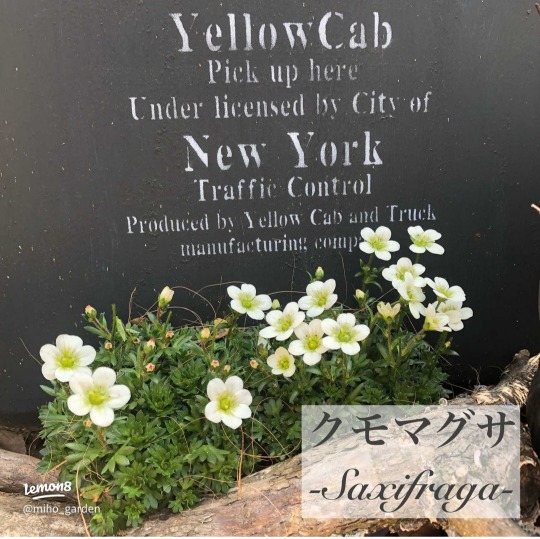
Kumomagusa are a low perennial. Meaning they live for multiple years, but don't grow as tall as many perennial flowers tend to do.
Their natural habitat is generally stoney places that are well supplied with underground water in mountain regions.

like all of Sannyo's flowers, they are naturally extremely tough flowers and grow in rough environments.
Moving on to Sannyo's actual Spellcard, the variety she's chosen is a red edged, 6 petal Kumomagusa, evenly overlapped and with rounded petals
Here are some in game images for "Heaven Shaking Kumomagusa" the Spellcard's Normal mode version:

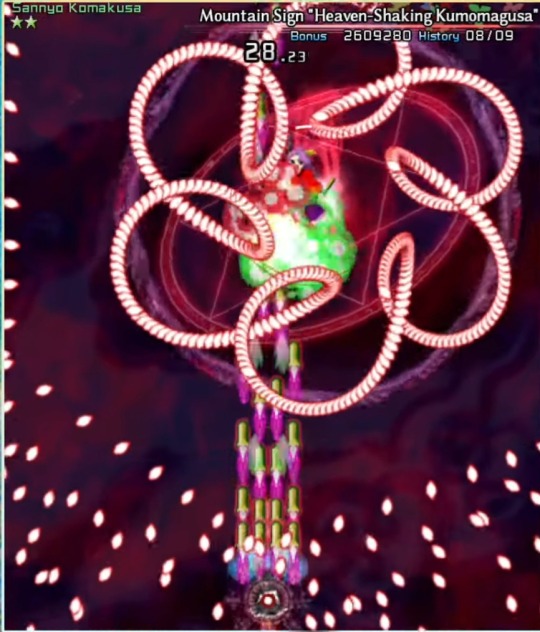
and here are some in game images for "Astonishing Kumomagusa". The Spellcard's Lunatic mode Version:

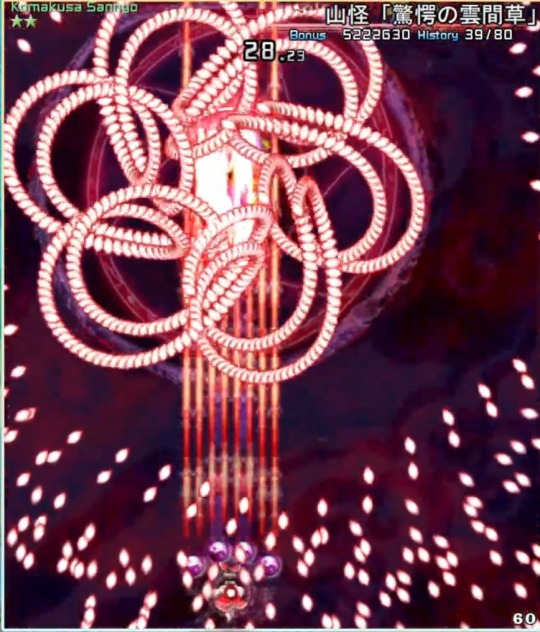
The pattern is extremely beautiful and recognizable, but it's not known for its difficulty.
Link to the art below:
(juwen971's stuff is awesome, they really like drawing Spellcards)
#sannyo komakusa#touhou project#Flowers#東方project#STG#artists on pixiv#I have now listed more on Kumomagusa than Wikipedia. Using 2 pages in a book from 1938 and a bit of Google#Thank you “H. Takeda. D.I.C. D.Sc.” lecturer on Ecological forestry. From Imperial University in Kyoto#The book did mention an identification for 3 varieties but..... the description is a riddle for my current knowledge base.#Not much. But still more than the nothing Wikipedia offers.
18 notes
·
View notes
Text
do people know that renmerry go to the equivalent of yale or cambridge
#juuuuuuuust below todai#but considering their future where tokyo's basically uninhabited it's probably taken the place of todai#(for the uninitiated: kyoto university and tokyo university are often abbreviated as kyodai and todai because “university” is “daigaku”)#(they're the top two universities in japan)
22 notes
·
View notes